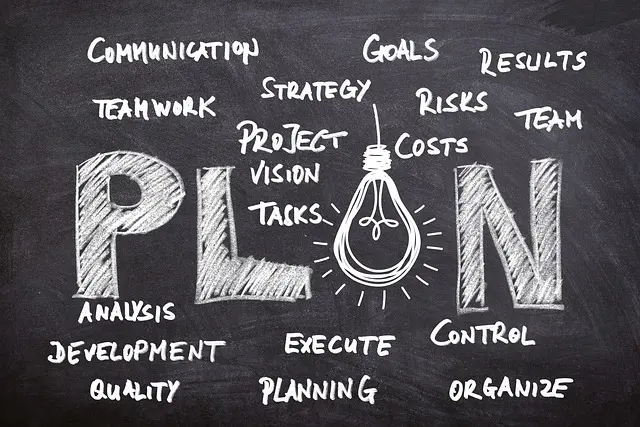
Common Misconceptions About STEM Degrees
STEM degrees have long been subject to a variety of misconceptions. One of the most common misconceptions is that studying STEM subjects is only for those who excel in math and science from an early age. However, this is far from the truth. While having a strong foundation in these subjects can certainly be advantageous, anyone with a curiosity and a willingness to learn can excel in STEM fields. In fact, many individuals have discovered their passion for STEM later in life and have gone on to have successful careers in these areas.
Another misconception about STEM degrees is that they only lead to jobs in research laboratories or academia. While it is true that many STEM graduates do pursue careers in these fields, the range of job opportunities available to them is much broader. STEM graduates can find employment in industries such as technology, healthcare, finance, and even creative fields like animation and design. The skills acquired during STEM education, such as critical thinking, problem-solving, and innovation, are highly valued by employers across various sectors. Thus, it is important to recognize that a STEM degree opens up a world of possibilities and is not limited to a narrow range of career paths.
Breaking Down the Complexity of STEM Fields
STEM fields encompass a wide range of disciplines, each with its own unique complexities. From mathematics to engineering, biology to computer science, these fields require a deep understanding of fundamental concepts and principles. One misconception about STEM is that it is all about memorizing facts and formulas. However, at its core, STEM is about problem-solving, critical thinking, and applying theoretical knowledge to real-world scenarios.
While it may seem daunting to break down the complexity of STEM fields, it is important to recognize that these fields are interconnected. Mathematics, for example, serves as the foundation for many STEM disciplines, providing the necessary tools for analyzing data, modeling systems, and developing algorithms. Similarly, physics serves as a bridge between theoretical concepts and their practical applications, allowing us to understand the laws and forces governing our physical world. By breaking down the complexity of STEM fields into their key components and understanding how they relate to each other, we can gain a clearer picture of the breadth and depth of these disciplines.
The Importance of STEM Education in Today’s World
In today’s rapidly evolving world, the importance of STEM education cannot be overstated. STEM, which stands for science, technology, engineering, and mathematics, forms the foundation for numerous areas of modern life. From advancements in medical research and technology to environmental sustainability and economic growth, STEM education plays a crucial role in shaping our society.
STEM education equips individuals with the necessary skills to think critically, problem-solve, and adapt to changing circumstances. It fosters a deep understanding of the scientific method, mathematical concepts, and technological advancements. This knowledge and skillset are not only essential for those pursuing careers in STEM fields but also for individuals in various professions. The ability to analyze data, interpret complex information, and make informed decisions is valued across industries, from finance to marketing to manufacturing.
Furthermore, STEM education cultivates creativity and innovation, encouraging individuals to think outside the box and develop new solutions to pressing challenges. With the rapid advancements in technology, there is a growing demand for individuals who can drive innovation and stay at the forefront of change. By nurturing an interest in STEM fields from an early age, we can inspire the next generation of inventors, scientists, engineers, and mathematicians who will push the boundaries of what is possible.
In summary, the significance of STEM education in today’s world cannot be overlooked. It fuels technological advancements, drives innovation, and equips individuals with the essential skills needed to thrive in a modern, knowledge-based economy. From fostering critical thinking to nurturing creativity, STEM education is the cornerstone of progress and plays a vital role in shaping our future.
Factors to Consider When Choosing a STEM Degree Program
Factors to consider when choosing a STEM degree program include career prospects, program requirements, and personal interests. In terms of career prospects, it is important to research job market trends and demand for specific STEM disciplines. While some fields may offer a higher number of job opportunities, others may have a more competitive market. It is crucial to align personal goals and aspirations with the potential career outcomes of a chosen STEM degree program.
Program requirements also play a significant role in decision-making. Different STEM disciplines have varying prerequisites and coursework structures. It is advisable to carefully review the curriculum and ensure that it aligns with both academic strengths and interests. Additionally, considering the flexibility of the program and the availability of electives can contribute to a well-rounded educational experience. Prospective students should also consider the potential need for internships or co-op programs, as these practical experiences can greatly enhance employability upon graduation. Overall, a methodical assessment of both career prospects and program requirements can aid in selecting the most suitable STEM degree program.
Next, let’s delve into exploring the different STEM degree options and their requirements, offering a comprehensive overview of the various disciplines and their unique characteristics. This will allow prospective STEM students to gain a broader understanding of the available options and make informed decisions. Moreover, understanding the balance between the difficulty of a program and personal interest is crucial. By striking a balance between these factors, students can choose a degree that challenges them academically while keeping their motivation levels high. Additionally, recognizing the transferable skills gained from a STEM education is essential in today’s rapidly evolving job market. These skills, such as critical thinking, problem-solving, and analytical reasoning, are highly valued across industries and can open up diverse career opportunities for STEM graduates. However, pursuing a STEM degree is not without its challenges. These challenges range from the rigorous coursework to the lack of representation and gender disparities within STEM fields. Therefore, it is important for students to be prepared for the unique obstacles they may encounter and develop strategies for success. By understanding the factors to consider when choosing a STEM degree program and anticipating the challenges ahead, prospective students can embark on a rewarding educational journey in the field of STEM.
Exploring Different STEM Degree Options and Their Requirements
When considering a STEM degree, there are several options available to students. One such option is a degree in computer science. This degree equips students with the knowledge and skills necessary to navigate the ever-changing world of technology. Courses in programming, database management, and software development form the core of this degree. Additionally, students may be required to take mathematics courses to build a strong foundation in problem-solving and logical reasoning. Overall, a computer science degree opens doors to a wide range of career prospects in fields such as software engineering, cybersecurity, and data analysis.
Another popular STEM degree option is engineering. This field offers various specializations, including civil, mechanical, electrical, and chemical engineering, among others. Each specialization focuses on different aspects of design, problem-solving, and implementation. For example, civil engineers are involved in the design and construction of infrastructure projects such as bridges and buildings, while mechanical engineers work with machines and systems. Students pursuing engineering degrees can expect to take courses in mathematics, physics, and specific engineering principles. Ultimately, a degree in engineering sets the stage for a career in industries such as manufacturing, construction, and research and development.
The Balance Between Difficulty and Personal Interest in STEM Degrees
The pursuit of a STEM degree often poses a delicate balance between the inherent difficulty of the subject matter and personal interest in the field. While STEM subjects are renowned for their complexity and rigorous coursework, it is important for students to be genuinely intrigued by the subject they choose to study. This balance ensures that students are motivated to overcome challenges and invest the necessary time and effort to excel in their chosen field.
It is not uncommon for individuals to be initially daunted by the difficulty of STEM subjects. Fields such as mathematics, engineering, and computer science can be demanding, requiring a deep understanding of complex theories and the ability to apply them to real-world problems. However, when personal interest and passion are present, these challenges can be seen as opportunities for growth and exploration. The pursuit of knowledge becomes an exciting journey rather than a mere obstacle to overcome. In fact, when students have a genuine interest in a particular subject, they are often more inclined to put in the extra effort needed to confront the challenges head-on and excel in their studies.
Highlighting the Transferable Skills Gained from STEM Education
STEM education provides students with a broad range of transferable skills that can be applied across various industries and sectors. One key skill that students gain through STEM education is problem-solving. Whether it is designing a new technology or finding innovative solutions to complex issues, STEM students are trained to think critically and approach problems in a logical and systematic manner. This ability to analyze and solve problems is highly valued in any professional setting, as it allows individuals to tackle challenges head-on and come up with innovative solutions. Additionally, STEM education emphasizes teamwork and collaboration, as many projects and experiments are conducted in group settings. This not only improves students’ ability to work effectively in teams but also enhances their communication and interpersonal skills, which are essential in today’s interconnected world.
Another transferable skill that STEM education fosters is creativity. Contrary to popular belief, STEM fields are not limited to rigid formulas and algorithms. In fact, creativity plays a crucial role in the development of new technologies and scientific breakthroughs. STEM students are encouraged to think outside the box, come up with original ideas, and challenge existing theories. This emphasis on creativity not only enables individuals to approach problems from different angles but also nurtures their ability to innovate, which is highly sought after in today’s fast-paced and ever-changing world. Furthermore, STEM education instills a strong sense of curiosity and a desire for lifelong learning. In order to stay up to date with the latest advancements and discoveries, STEM professionals need to constantly adapt and acquire new knowledge and skills. This curiosity-driven mindset allows individuals to continuously grow and expand their expertise, making them adaptable and valuable assets in any professional setting. Overall, the transferable skills gained from STEM education go far beyond technical knowledge and provide individuals with a solid foundation for success in various fields.
Challenges Faced by Students Pursuing STEM Degrees
One of the biggest challenges faced by students pursuing STEM degrees is the rigorous coursework. STEM fields often require a strong foundation in math and science, which can be demanding for students who may not have had extensive exposure to these subjects. Additionally, the complexity of the coursework can increase as students progress through their degree program, requiring them to continually adapt and build upon their prior knowledge. This can be a source of stress and anxiety for many students, as they strive to meet the high academic standards associated with STEM degrees.
Another challenge faced by students pursuing STEM degrees is the lack of diversity in these fields. Historically, STEM fields have been dominated by certain demographic groups, such as males and individuals from higher socioeconomic backgrounds. This lack of diversity can create a sense of isolation and underrepresentation for students who do not fit the traditional profile of a STEM student. Additionally, it may lead to feelings of imposter syndrome, as students question their abilities and sense of belonging in their chosen field. Efforts are being made to address this disparity and create more inclusive environments within STEM education, but it remains an ongoing challenge for students entering these fields.
Strategies for Success in STEM Degree Programs
Navigating through a STEM degree program can be a challenging endeavor. However, with the right strategies in place, students can set themselves up for success. One crucial aspect is time management. STEM courses often require extensive studying and problem-solving, so it’s essential to allocate sufficient time for coursework and assignments. Creating a schedule and sticking to it can help students stay organized and ensure that they devote the necessary time to each subject.
Additionally, seeking support from peers and professors can make a significant difference. Collaborating with classmates can provide an opportunity for discussions and shared learning, increasing comprehension and retention of complex concepts. Asking questions, seeking clarification, and participating in class discussions can help students grasp the material better. It’s also beneficial to take advantage of office hours or seek out tutoring if needed. By reaching out for help when necessary, students can enhance their understanding and improve their overall performance in STEM programs.
The Future Outlook and Opportunities for STEM Graduates
The future outlook for STEM graduates appears promising, with an abundance of opportunities available in a variety of industries. As technology continues to advance and shape our world, the demand for professionals with expertise in science, technology, engineering, and mathematics is on the rise. From renewable energy to artificial intelligence, STEM graduates can contribute to groundbreaking innovations and drive societal progress. These graduates possess the skills and knowledge needed to tackle complex challenges, making them highly sought after in the job market.
Opportunities for STEM graduates span across multiple fields, including healthcare, finance, manufacturing, and research. In healthcare, for example, advancements in medical technology and the growing emphasis on personalized medicine have created a need for professionals with a strong STEM background. Similarly, financial institutions rely on data analysis and mathematical models to make informed investment decisions, providing opportunities for graduates with expertise in these areas. Moreover, the research and development sector heavily relies on STEM professionals to push boundaries, optimize processes, and discover new avenues for innovation. As a result, STEM graduates can explore diverse paths and shape the future of various industries.












